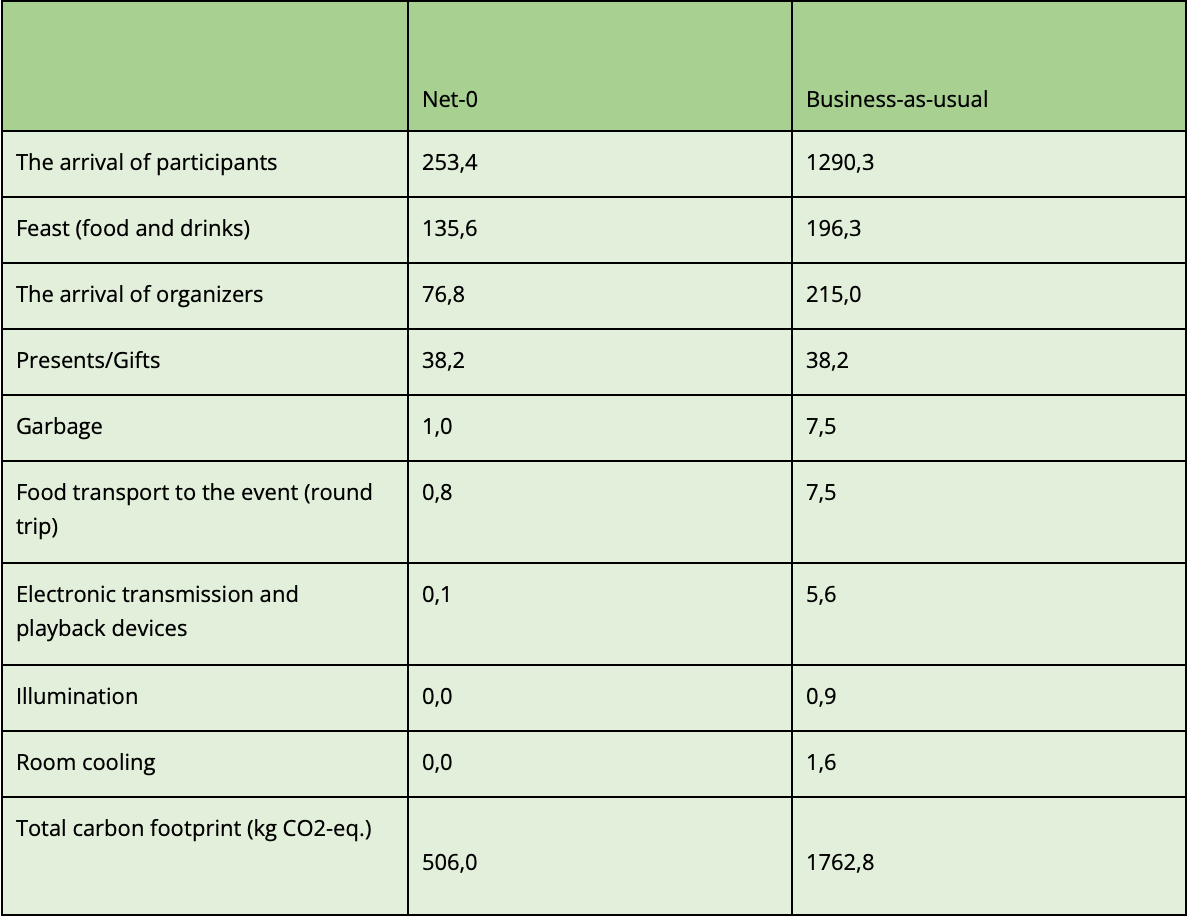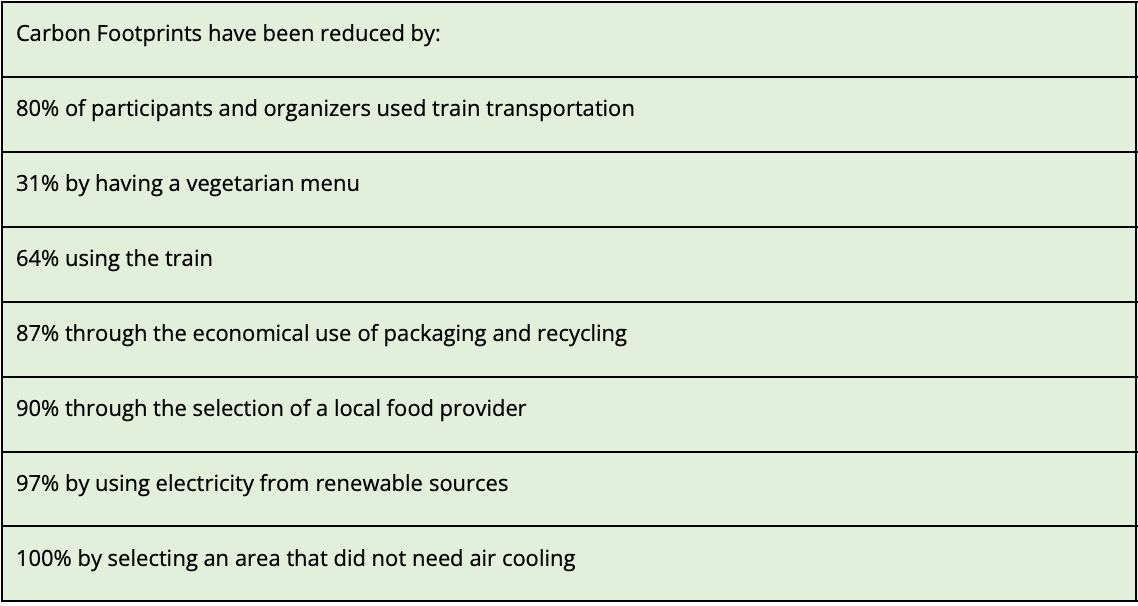Sustainable Future
Footsteps toward Footprints: Calculating the Carbon Footprint
The Adriatic Team
Presentation of the methodology for calculating the Carbon Footprint
The “carbon footprint” is the common term for the total amount of carbon dioxide (CO2) and greenhouse gas (GHG) emissions released into the atmosphere as a direct result of the activities of a particular individual, organization or community. The carbon footprint can be calculated and evaluated. It measures the impact on the environment of our actions and decisions. For example, based on data obtained, we can lead a more sustainable existence by changing our lifestyle or purchasing habits. Organizations can also improve energy efficiency in business or production processes and use renewable energy sources. The carbon footprint of organized events can be reduced by careful consideration of the method of transportation of participants and organizers, the choice of location and locality of food providers, economical use of packaging, recycling of garbage and the use of electricity from renewable sources.
From Words to Actions
At the Institute for Strategic Solutions (ISR), we designed the “From Words to Actions Project”, which gave us the opportunity to organize the first regional Net-0 carbon event in Slovenia. The purpose of the project was to gather and connect representatives of corporations and companies, politicians, non-governmental organizations, international agencies, as well as innovators of breakthrough solutions and representatives of the financial community, at one event.
The co-organizers of the event were the Ministry of Foreign Affairs of the Republic of Slovenia and Spirit, the public agency of the Republic of Slovenia for the promotion of entrepreneurship, innovation, development, investment and tourism.
The red thread of the program was carbon neutrality and zero emissions. All important stakeholders and partners agreed that these are the key proponents of a sustainable future. However, strategies differ and seldom apply to entire organizations as well as their supply chains, and this inclusion presents unique and difficult challenges. The participants and guests at the event gained access to new ideas and integrated solutions – and most importantly, a network of potential partners. When organizing the event, we were committed to careful monitoring, as well as to planning measures to reduce emissions and thus benefit our environment. We also made sure that we balanced emissions released into the atmosphere by planting trees so that there was a Net-0 end result.

The ISR’s Approach to the Challenge
The participants helped each other using international standards for planning low-carbon projects and using international conversion factors. These established standards do not exist yet for Slovenia, except in the electricity grid. However, we followed the ISO 14064-2:2019 standard and guidelines for quantification, monitoring and reporting of greenhouse emissions for each individual part of the project. As part of the methodological framework, we compared the basic (business as usual) and alternative (Net-0) scenarios for the event organization, preparation and implementation. We carefully evaluated and verified all data based on each identified activity and took the steps necessary for the successful implementation of the Net-0 event. This included the arrival and transportation of organizers and participants, careful selection of the local and energy-efficient cooling of the space. In addition, we served local food and drinks, gave local gifts to the guests, recycled garbage, monitored transportation of local food, to and from the event and used low-emission electronic devices in sound and lighting the event.

We successfully reduced our carbon footprint by:
- using public train service as transport for participants and organizers (round trip)
- selecting an inner space that did not require cooling
- choosing a local food provider and a vegetarian menu for the banquet
- economical use of packaging and recycling of garbage
- using electricity from renewable sources
When collecting data, we adhered strictly to the concepts of relevance, completeness, consistency, accuracy, transparency and conservatism. We took special care when choosing food for the event. As a starting point, we used specific modules in the Gastronomy and Hotel Services Guide (Zalar et al 2008), which systematically outlines all the guidelines and know-how that eco-friendly chefs utilise. It also prescribes energy-efficient technological processes of food preparation, which helped us to select suitable food providers and vegetarian menus. It also showed us how to calculate the carbon footprint of the banquet. By choosing a local food provider, we saved as much as 90% of the carbon footprint and we also saved 31% of the carbon footprint by deciding to serve only vegetarian food at the event, in comparison to the basic, business-as-usual scenario, and through the economical use of packaging and recycling, we succeeded in reducing the carbon footprint by as much as 87%, again, compared to the basic, business-as-usual scenario.
Committing to the organization of a carbon-free event was a brave decision, which is why we prioritized reducing the event’s carbon footprint, which we successfully achieved using all the strategies above. We undertook the final calculation of the footprint ourselves, as existing tools are insufficiently accurate, be it that they are intended for the overall operations of companies or multi-day events. We attributed data to certain activities and multiplied them by two conversion factors. In the basic (business-as-usual) scenario, we used the International Hydropower Association as a source of data, and in the alternative (Net-0) scenario, we used the conversion factor used by the Energy Agency in the document Total Remaining Composition of Production Sources for 2021. This takes into account the share of electricity production from fossil fuels, based on the rest of the European composition of production sources and according to the data of the International Hydropower Association. We succeeded in achieving total residual CO2 emissions of 0.023kg CO2/kWh and in the case of the Energy Agency 0.872kg CO2/kWh.



At the Event – Details Matter
Or to put it another way, is it permissible for one single participant to arrive on a trans-oceanic flight, and release carbon emissions into the atmosphere? In addition to the choice of transport used, the other most important factor to consider is catering. Careful attention should be paid to the choice of the food provider, and also to the food that is served. It makes eco-sense to avoid meat, even if local beef has a smaller carbon footprint than Patagonian beef!
However, even the lowest amount of carbon produced must be removed from the atmosphere, and this can be attained by planting trees, not alien species, but indigenous ones from Slovenia. In the case of our event, the Carbon produced amounted to 506kg of CO2. To counteract this, we will plant 51 saplings of native Maribor tree species and thereby “return” the CO2 we emitted back to nature.


